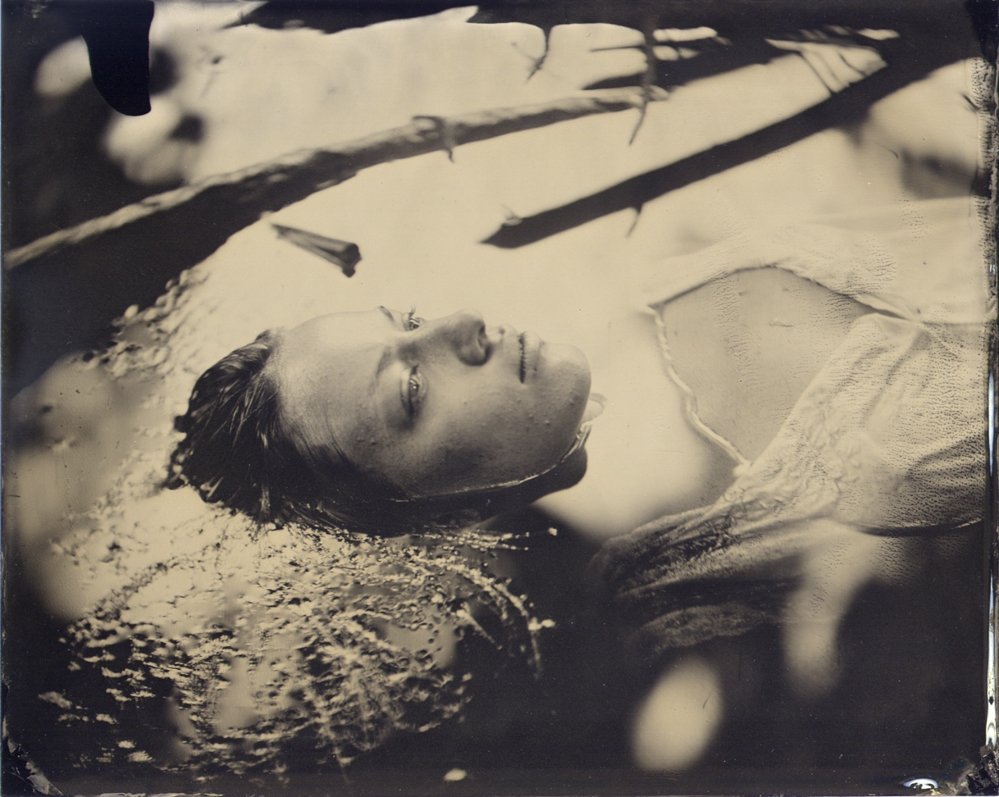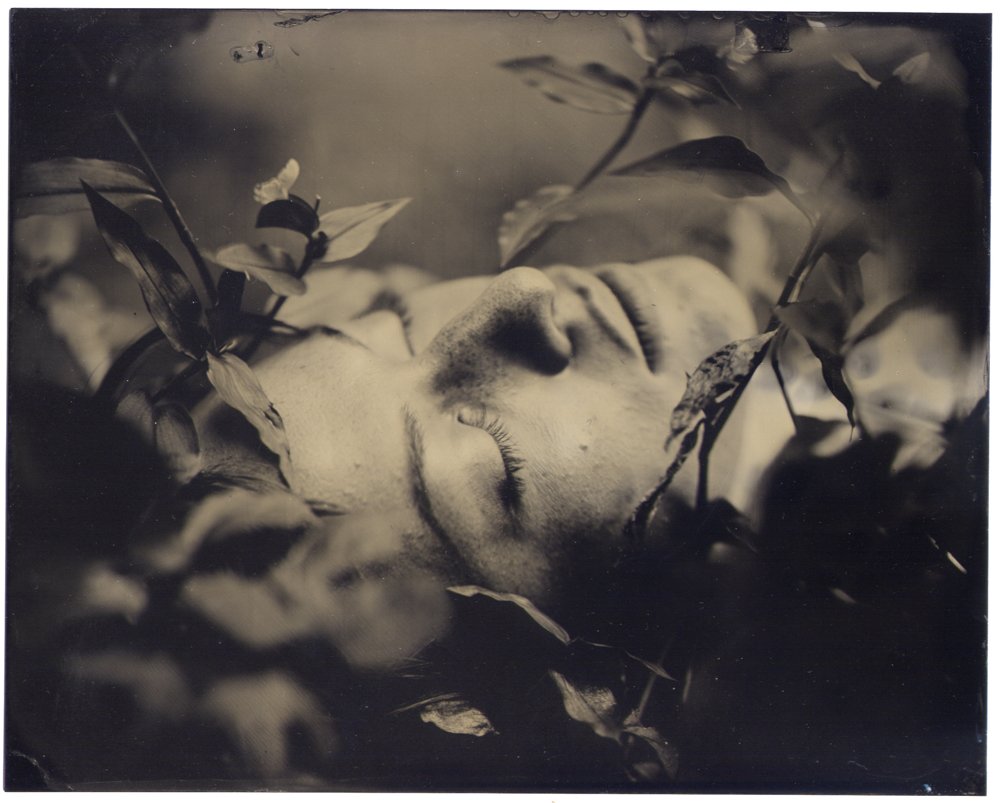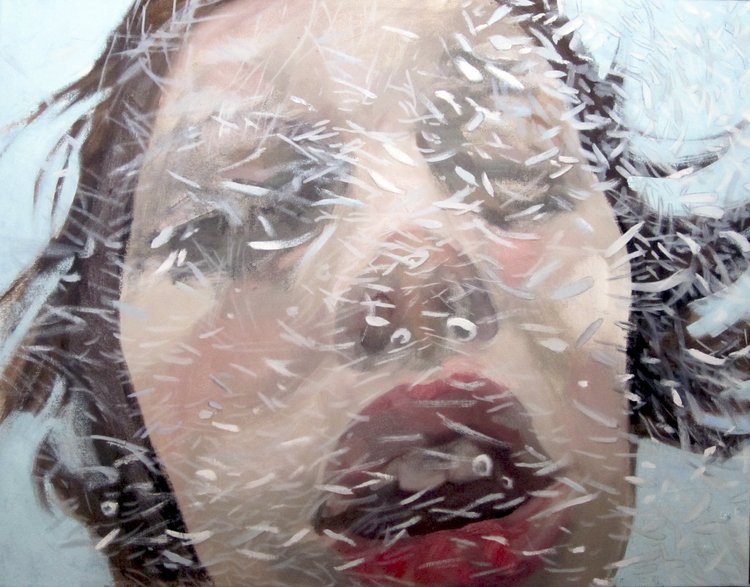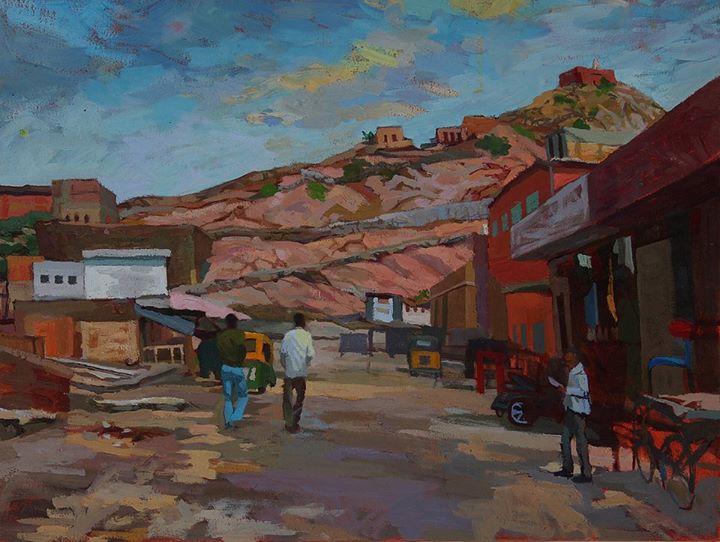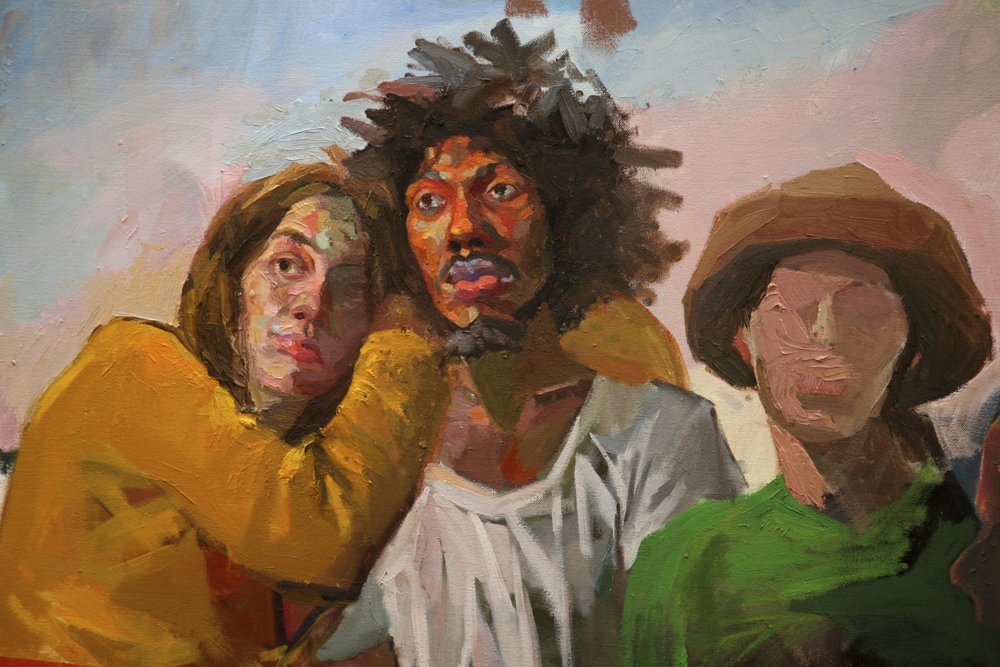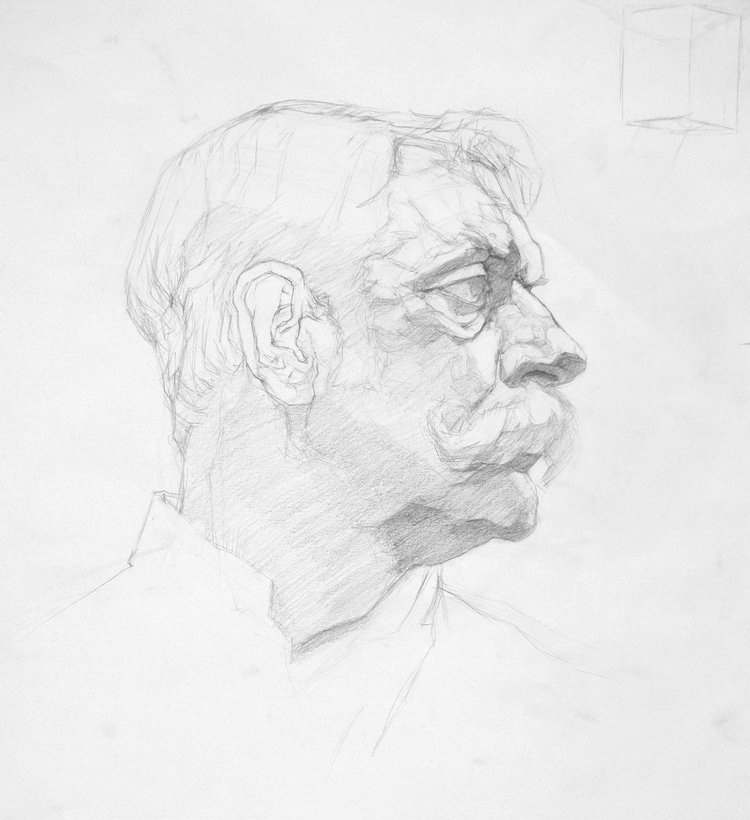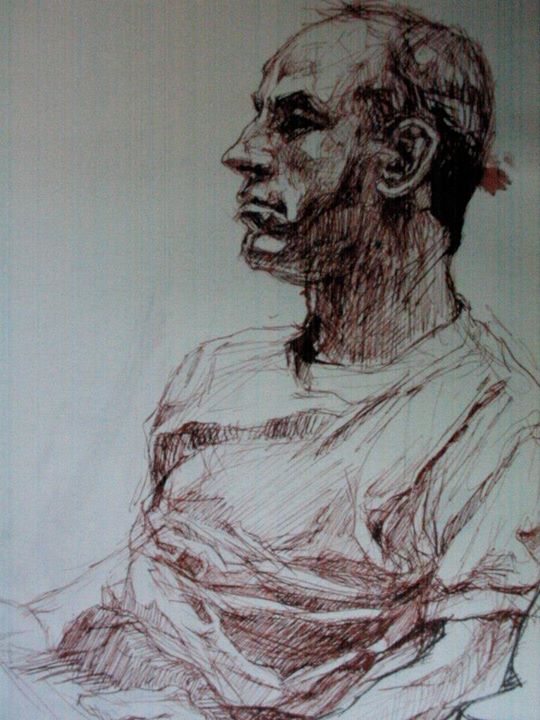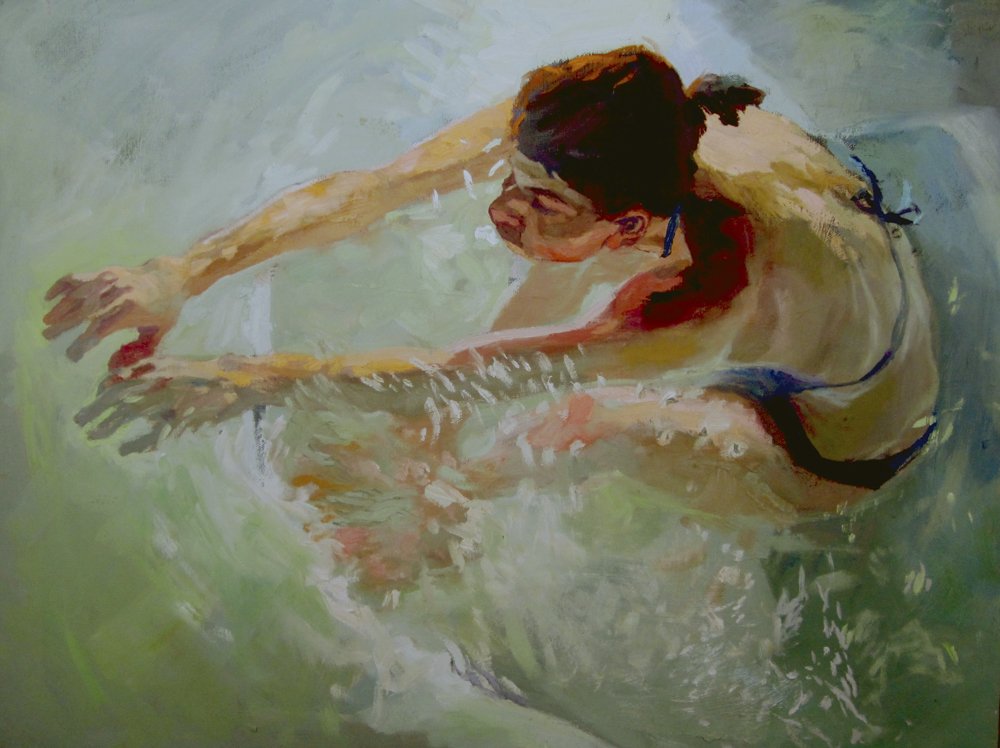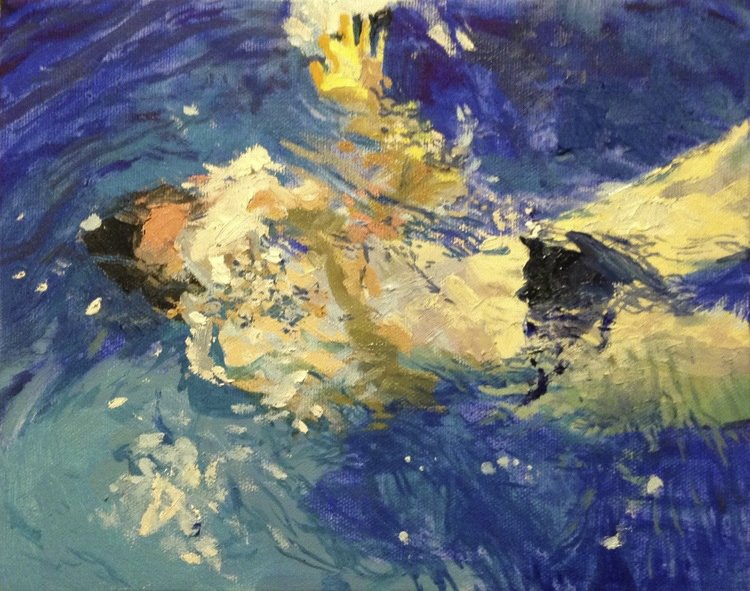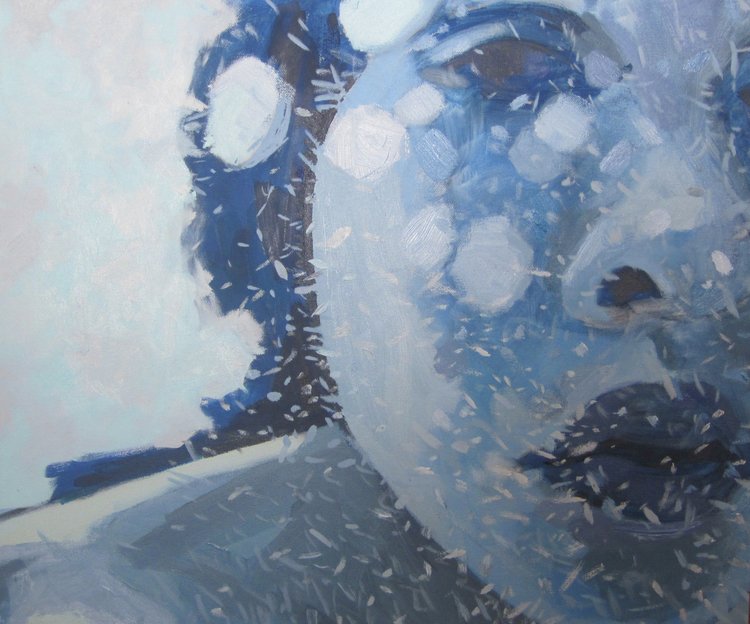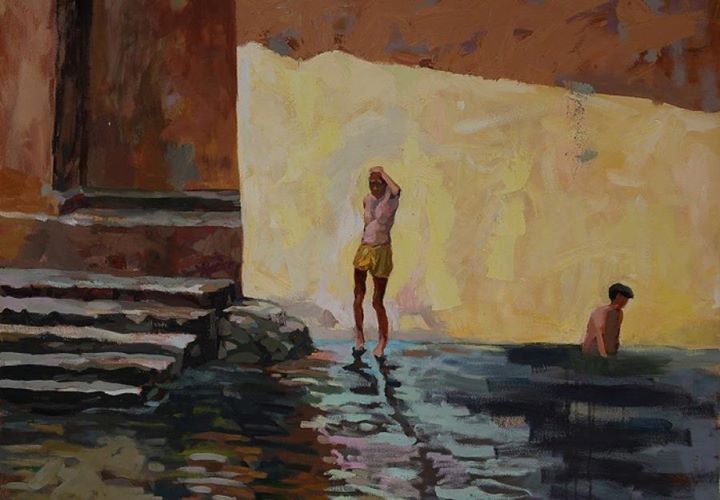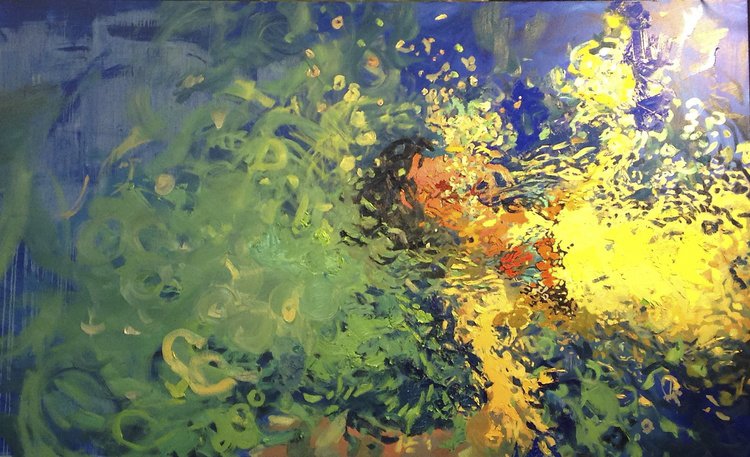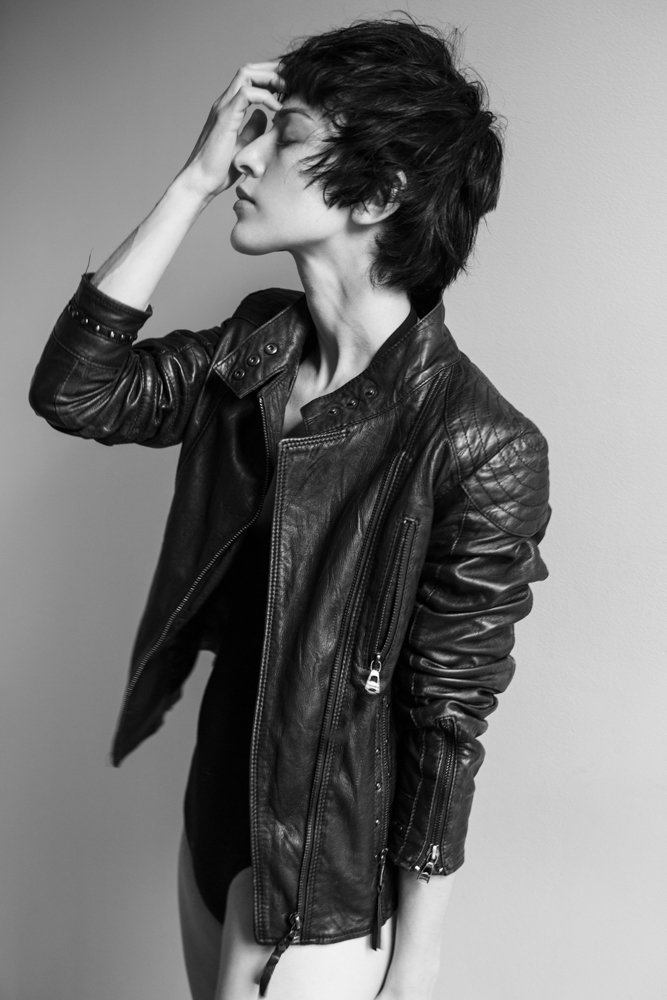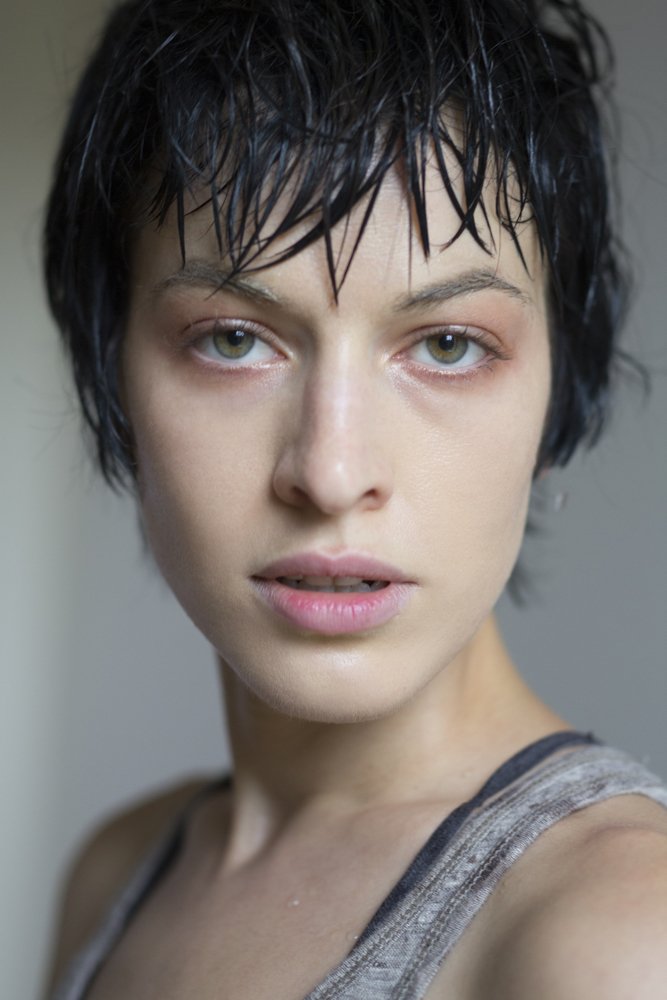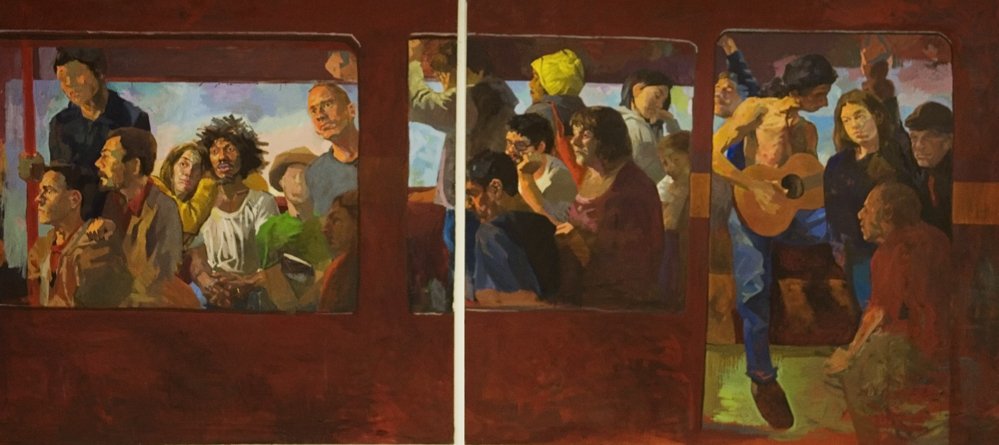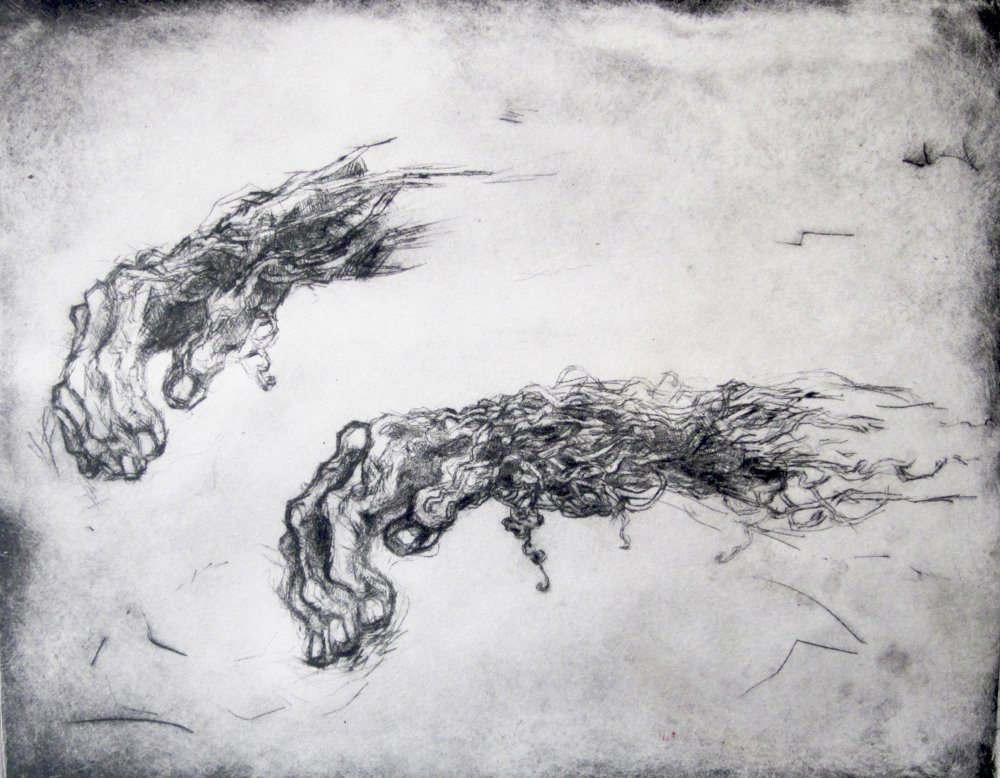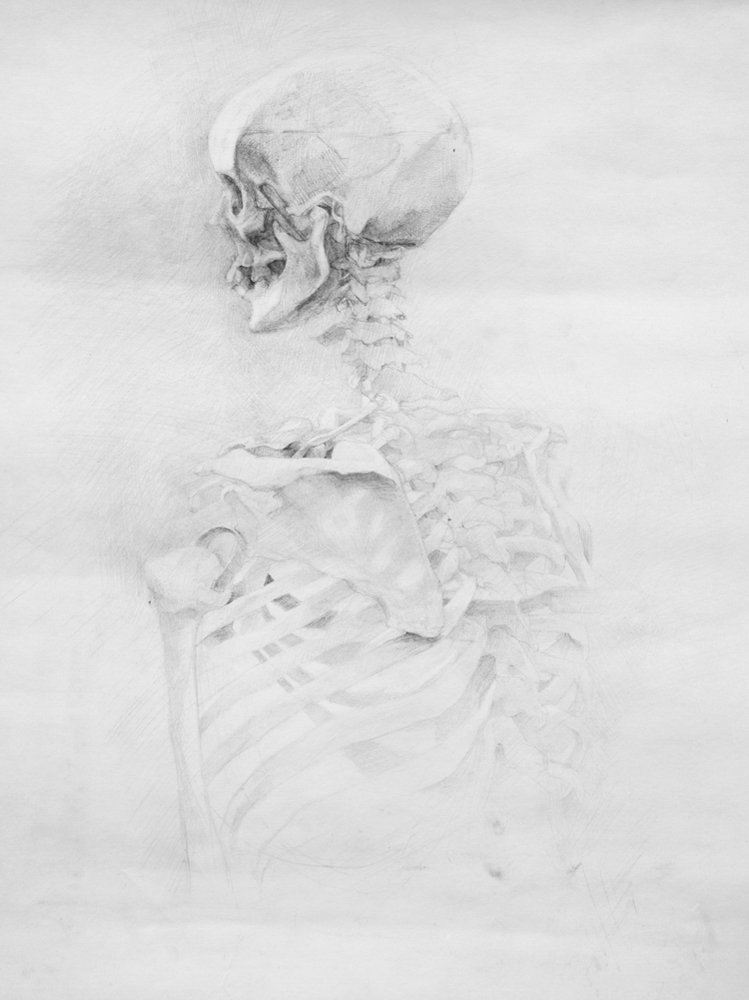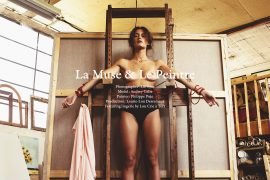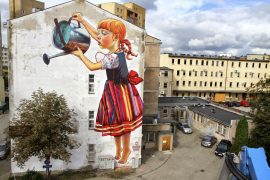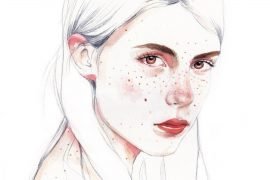It occasionally happens that models change roles, having gained experience posing for others, shifting to other positions in the creative industries, usually behind the camera. This might be the norm, yet it is not the case of Hannah Vander Molen. The process was reversed for the LA native and NY based artist/model (represented by Trump models) who was scouted long after her interest in the visual arts was established.
Interview by Demetrios Drystellas.
Muse to others, creator for yourself; you merge in one person the best of two different yet connected realms, model and artist, being an accomplished painter. Is there any interaction between those two elements? Has your experience posing for others influenced your artistic style and vice versa?
Absolutely. I would say that the modeling and painting realms have influenced each another greatly. I first learned to model for my mother and her friends, who are all artists. The photographs they took of me had little to do with fashion, but posing from a young age taught me a lot about expression and drawing up emotion for the camera. I remember my mom saying, “don’t smile! This isn’t a school picture. This is art” I continued posing for portraits for my mom and her photographer/painter friends, but when I studied art in school posing took on a new dimension for me: it was no longer just about the emotion in my face, but also about the emotion my body could convey. I often posed for friends and tried to create shapes with my body that I knew would be a challenge for them to draw and paint, and would therefore be more fun for them.
My favorite art models to draw were the ones who were really comfortable with their bodies and could move so naturally it was like no one else was watching them. It didn’t matter if they were ugly, beautiful, short, fat, or skinny – I wanted to capture them as they really were and to be as accurate as possible. Remembering my favorite types of dynamic poses from figure drawing has really helped me with my own posing in fashion. When I am in front of a photographer I am reminded of my experience when painting with model in front of me, and I think to myself: “keep them excited about what they’re doing, like you would want to be. Don’t let them get bored”
What attracted you to that art-form? Did you study, become an apprentice or on your own?
I have been drawing since I was about three. In a way it was all I ever wanted to do. My mom was a photographer, my dad was a cartoonist and a film maker, my grandparents were painters. Art runs in my blood, I think, and it was kind of an undeniable force in my life.
My dad first taught me to draw when I was a toddler. He would take me to the woods, and we would sketch trees. Later when he thought I was ready he taught me how to draw a face, the mathematics of where a nose sits in relation to the eyes. Then he had me do self portraits. Lots of self portraits. I doodled in a notebook in all of my high school classes and, despite my efforts to try other things (biology, anthropology, writing, music, and zoology) I couldn’t kick the need to make art. It was the thing that I was best at and that came the most naturally to me. In the end I decided to major in drawing and painting in college, and I just graduated.
Your paintings feature prominent impressionist elements, whereas your drawings are more realistic. Where do you draw inspiration from? Are there particular works that have shaped you as an artist?
Thanks for noticing that. I never intended to be anything but a realistic painter, like how I draw. But I found that to be a lot less fun. I think drawing comes easy for me, but painting is harder, and so I’m always more tempted to scrap the rules and play – perhaps because I don’t know it so well yet, like we are still dating and not yet married, so anything goes. I really let myself go with painting, and the result is a lot more impressionistic. Maybe I’m using a different part of my brain? I don’t know, but it’s a lot of fun!
My favorite living artist is Antonio Lopez Garcia. I see how much fun he is having in his work because of how tremendously good it is. I see how he really loves doing it, because if he didn’t he wouldn’t take such painstaking time with details, and to me the love of doing it is everything. I’m very inspired by that.
I also love Milton Avery, Richard Diebenkorn, Elmer Bischoff, Euan Uglow, and the drawings of Kathe Kollwitz and of Leonardo Da Vinci. I’m forgetting about a thousand other names, but there’s so many great artists I’m inspired by, and my influences change frequently. Not just painters, but also photographers, writers, musicians, films. I think some of my latest stuff might be partially inspired by Spaghetti Westerns like Sergio Leone’s “Once Upon a Time in the West”. I love those close up shots of the cowboys’ faces.
You have painted a number of underwater scenes, symbolically water has purifying properties and optically it distorts form and shape. What sparked your interest in this theme?
I like how water naturally abstracts the form.
I’ve always been interested in people, in scenes of everyday life and in pulling the extraordinary out of the ordinary. I live part-time in Los Angeles. Swimming pools are a pretty common there. One day I was in my boyfriend’s family’s pool, and I noticed how bizarre my legs and arms looked underwater. It occurred to me that water naturally does what I have been trying to teach my brain to do as I learn to paint – it abstracts objects, breaking them down into shapes and colors. I asked my boyfriend to take some pictures of my face and body submerged and distorted under the surface of his parents’ swimming pool and I used these images and sketches I made of light patterns in the pool water to start a series of paintings. It allows me to realistically portray natural abstraction.
If you had the chance to collaborate with anyone you wanted to, to sit for you or pose for them from the present and the past,, who would they be, why and which role would you undertake?
Well, I’d love to pose for Lopez Garcia, for one. It would be fun to see what Max Beckman would do with me. I would have really liked to paint Lucian Freud. He had such a great face. I’d love to model for Jean-Paul Goude, Miles Aldridge and…..well, Mapplethorpe would have been nice! It would be great to incorporate my painting into a shoot somehow. I’ve been playing with this idea with a couple photographers, but I’d love to do something on a large scale. Perhaps mixed media. There’s a few ideas in the works, so stay tuned….
Have you ever become frustrated with your artwork, or situations within the art industry, causing you to take breaks?
Definitely. I didn’t think I wanted to be a painter at all halfway through college, and by the time I got out I had just had it with art. I thought it was stupid and pretentious and unimportant for people. I had a few negative things happen to me as a student that really tainted my attitude toward art and the art world and that made me question its purpose. Then I stopped working altogether for several months. I just had no desire to draw or paint, which made me question what I wanted to do in life if not that. I loved modeling, but I knew it was even less of a concrete path than fine arts. Finally one day when I was alone in my house, and there was nobody around to look over my shoulder at what I was doing, I made a new painting. And even though I hadn’t painted in months I thought it was maybe the best thing I’d done. I guess all that time off from making art had made me suddenly paint without any worry about what others would think, how my work would be received or how it would affect others, and this made the painting good. So I started to think more like this, and I made better work. Now, even if I am working on a commission and have to consider how the work will be received, I still try to make the piece as if I am making it for myself – without worry about the outcome, because I’m compelled to make the work, because I love doing it so much.
Modeling. Did you ever think that you would become a model at a point of your life? How did it start and why?
At no point in my life did I ever think I would become a model. A lot of people told me I should do it, but I figured they were just being nice. I knew I could do art modeling and what not, but I just always assumed I was too short for fashion. The models I knew in fashion were nearly 6 feet tall, as opposed to my 5’7” (170 cm). I have been happily proven wrong. I was scouted in LA while in school and am now represented in NYC.
Do you think that modeling affected who you are?
Modeling has definitely had an impact on who I am. There have been positives and negatives. There are a lot of people in the business looking to take advantage of young women and men. And there are a lot of empty promises. It is so often that something great is dangled in front of me and as soon as I can comprehend the gravity of this opportunity that lies before me, it’s snatched away. Rejection is a staple in this industry. But hey – it is in the art world too. In many ways, the fashion and fine art worlds are similar, though they wouldn’t want you to know it. But rejection is a funny thing. It’s not as scary or harsh as I imagined it would be. Most of the time it’s not personal at all, and there is a kind of solace to be had in that. I’ve learned that if I’m not right for one project, I’ll be right for another. Everybody has their preferences, just like I have mine. This knowledge has forced me to grow a very strong back bone, become more self confidant, and learn to roll with the punches – both in fashion and in art.
The fashion industry. Most people think of the glamorous side only, forgetting that the industry has an ugly face too. Has anything troubled you industry-wise?
As most models will probably tell you, there are a lot of issues involving women’s (and men’s) health and safety. Eating disorders are still commonplace, sexual harassment and molestation happens frequently – often with models under 18. Many models are too young to cope with these kinds of situations and don’t have a safe person to turn to for help. I’m happy that many influential people in the industry are standing up and trying to make changes, like Sara Ziff, the founder of the Model Alliance – a union created to protect models and offer them legal counsel. I’m also happy that body image ideals seem to be swinging back into a somewhat healthier direction. I’m also happy to see that there is a growing interest in models who have talents outside of fashion. I think it’s important we associate a personality to these people – after all, they are the subjects of collaboration and should therefore have some voice. I hope to be a part of the movement to help bring about these changes and to share some of the reality of this industry with the people who think it’s all glitz and glamor. It’s not. It’s a lot of hard work, a lot of rejection, sometimes even cruelty, and the pay is not always as incredible as people may think.
How do you feel about the amount of retouching taking place in the industry? To be more specific, how do you feel when might clients edit your appearance to the point of being almost unrecognisable?
I don’t love retouching. I happen to like my flaws – maybe because I’m an obsessive painter, and flaws are my favorite parts of people to try to capture. When I do self portraits, people always tell me I make myself look much older. My mom always laughs and tells me my favorite pictures of myself are the most unflattering ones. I think it’s important for people to see a real face and a real body in the world of fashion. No wonder so many young men and women have body issues. They’re not looking at reality. They’re not taught to love reality; they’re taught to run from it, avoid it, and change it at all costs. I’ve watched photographers retouch models and the difference is astounding. It’s not even the same person anymore. If I had some say, I would ask to not be retouched beyond recognition. I hope the industry will amend this a bit. We don’t have to look fake. We can look like real people and still sell a product.
We observe lately a strong interest from young girls who want to become fashion models at all costs, each for different reasons. What do you think of the soaring popularity top models enjoy now in the digital era, attaining iconic status and influencing young people?
I can understand the desire to become a model. I think most girls like the sound of it. But there’s a lot more to it than glitz and glamor, like you said. And it’s a tough, tough industry. These new digital icons are interesting. I think they are more than icons of beauty. They add charisma and brains to the business, which can be a very positive influence on young women. I have to say, I really like Cara Delevigne. She is really silly, always making these goofy faces. She doesn’t seem to care too much about being an icon of beauty, moreso bringing personality to the forefront, which I think is so refreshing. I think she’s a great example of someone making changes in the industry because she is beautiful but also cool and fun and seems comfortable in her own skin. This is a far superior thing to admire in a person than appearance, and I hope young girls are taking notice of this. And Kate Moss is cool because she’s just a great muse, a real chameleon. She is a model in it’s purest form. She shows great range. AND she’s not tall. I think that’s pretty cool.
In the end of the day, what fulfills you as a person?
HARD. WORK. And enjoying the process.
What should we expect to see in the future?
I can’t tell. That would be cheating.
You contact Hannah for commissions via www.hannahvandermolen.net and follow her on Instagram to view more of her artwork and modeling images.
Interview by Demetrios Drystellas.


